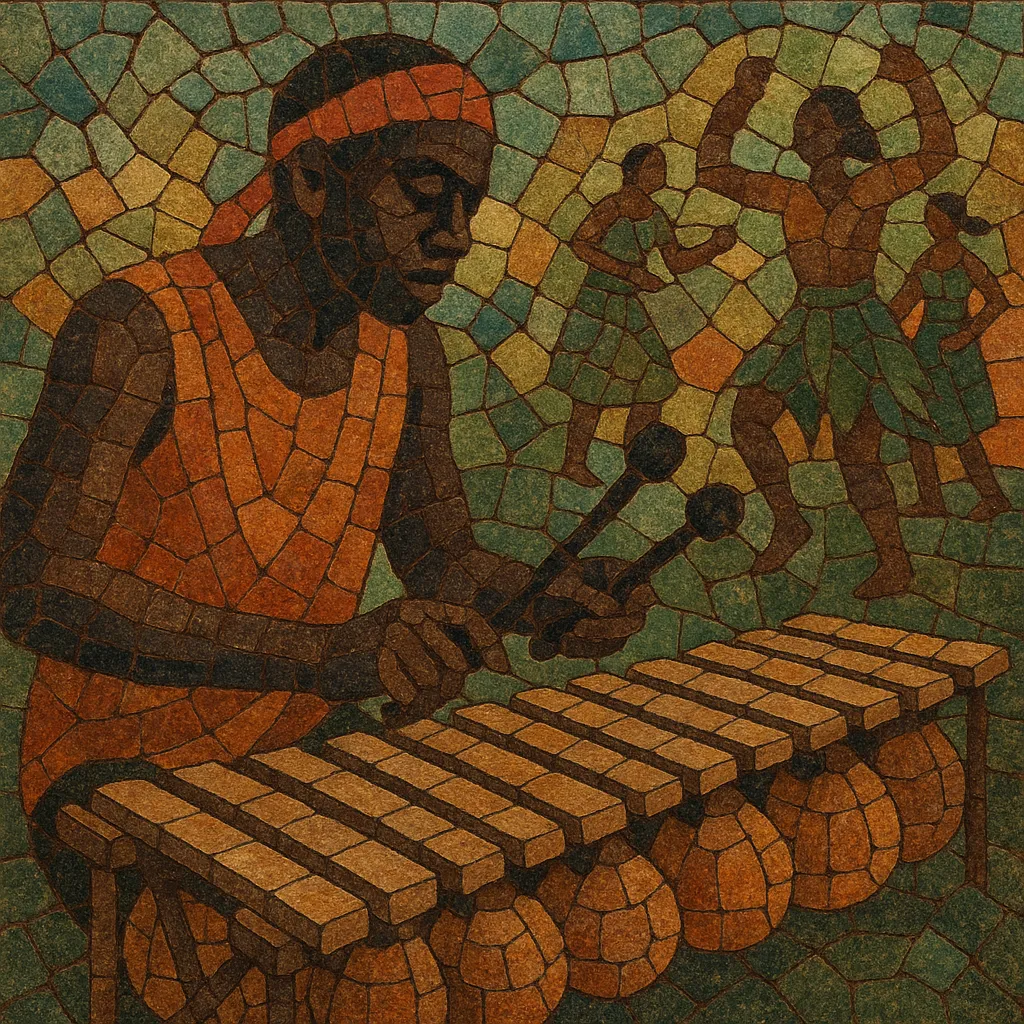Timbila is the orchestral xylophone music of the Chopi people of southern Mozambique. An ensemble of differently sized wooden xylophones with gourd resonators performs multi-movement suites that combine instrumental interlocking patterns with choral singing and dance.
The music is distinguished by its bright, buzzing timbre (created by mirliton membranes on the resonators), tightly woven ostinatos, and rich polyrhythms in a lilting 12/8 feel. Compositions are often topical poems—praising leaders, commemorating events, or offering social commentary—set to intricate, cyclic grooves.
Timbila emerged among the Chopi communities of present-day southern Mozambique centuries ago and was already noted by early colonial observers. Its core instrument, the mbila (singular; timbila is plural), is a wooden xylophone fitted with calabash resonators that carry a distinctive buzzing membrane. Ensembles grew into large "orchestras" with multiple registers—roughly soprano, alto, tenor, and bass—capable of complex contrapuntal textures.
Repertoire is organized into multi-movement suites that blend dance, choral singing, and instrumental interlock. A composer-leader (often also the poet and conductor) crafts new pieces on current affairs, moral themes, or historical memory, and teaches the parts by rote. Each movement layers ostinatos and melodies into dense, cyclical forms, while dancers articulate the structure.
In the 20th century, ethnomusicologists and recordists documented Chopi timbila extensively, bringing global attention to the tradition. In 2005 it was recognized by UNESCO as a Masterpiece of the Oral and Intangible Heritage of Humanity. Despite urbanization and migration, village-based ensembles and contemporary artist-collectives continue to sustain and renew the style, performing at festivals, ceremonies, and national cultural events.


